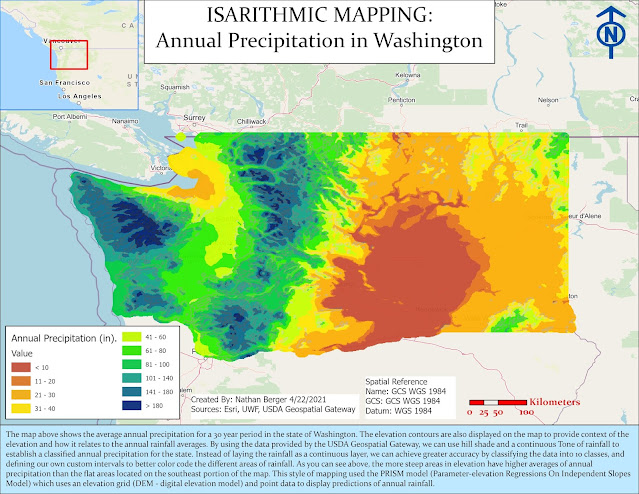TIN's vs. DEM's: 3D Elevation Models In Arc GIS Pro
Elevation Models For GIS
Today we are going to run through some analysis of comparing Digital Elevation Models (DEM's) to Triangular Irregular Networks (TIN's) using Arc GIS Pro.
One of the main differences between TIN's and DEM's, is that a DEM file is raster based, whereas a TIN elevation model is vector based. In GIS, we can use TIN's and DEM's to analyze elevation of local areas or global even to conduct slope analysis, aspect ratio, terrain mapping, and solve complex problems.
Using a DEM to Develop a Ski Run Suitability Map
In the example below, we are identifying where an engineering firm would place a ski run for a resort in an area based on elevation, slope, and aspect parameters. We used the weighted overlay tool to combine 3 reclassified rasters of elevation at a high altitude, slope at a high pitch, and aspect for a SW positioning with given percentages of weight.
25% aspect
40% elevation
35% slope
This was our result:
As you can see, we can use DEM's to solve complex projects in 3D using arc GIS Pro based on parameters of the assignment, using reclassified rasters from a DEM file, and a weighted overlay tool to identify the final raster of locations in which to place the Ski run.
Now we are going to use a TIN to compare the results of a TIN to a DEM...
TIN Example:
You can run the create TIN tool in Arc GIS Pro and actually create a TIN from a point based shapefile. Granted, you need a lot of points to do this. You also want the points to be distributed across the landscape proportionally to the terrain of the study area you are building your TIN over. That being said, we can see the spatial analysis that we did earlier using a DEM file, but instead of running the spatial analysis tools, we can simply modify the TIN symbology and select what we want to display. The TIN offers contour lines, slope, aspect, and even hill shade. We can define our contour line intervals as we want as well. We can also export a DEM file from our TIN and specify the cell size for that DEM.
Main differences between TIN's and DEM's:
- TIN's are not as widely available for use as raster elevation models
- TIN's have to be in feet or meters, they do not accept Decimal degrees
- TIN's are made up of a bunch of triangles with end points called nodes to determine the exact "face" of each tin with 3 xyz points for each tin (Rasters are continuous). When clicking on the face for each TIN, you can immediately get the slope, aspect, etc...
- Rasters have some redundancy in data across a landscape whereas TIN's do not
- TINs can use breadlines from natural features such as a lake or river





Comments
Post a Comment